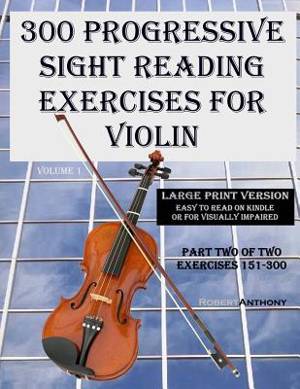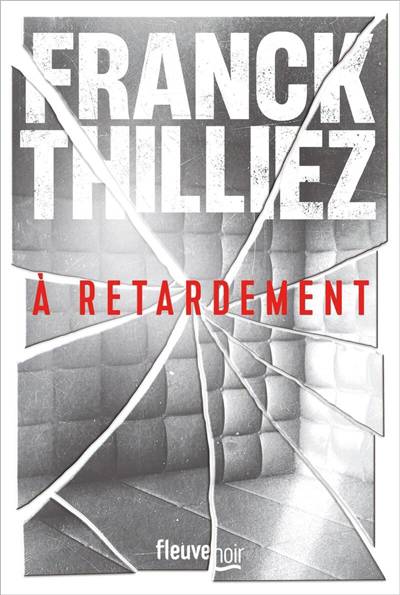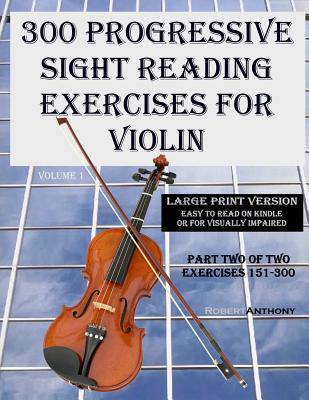
- Retrait gratuit dans votre magasin Club
- 7.000.000 titres dans notre catalogue
- Payer en toute sécurité
- Toujours un magasin près de chez vous
- Retrait gratuit dans votre magasin Club
- 7.000.0000 titres dans notre catalogue
- Payer en toute sécurité
- Toujours un magasin près de chez vous
300 Progressive Sight Reading Exercises for Violin Large Print Version
Part Two of Two, Exercises 151-300
Robert Anthony
Livre broché | Anglais | 300 Progressive Sight Reading Exercises for Violin Large Print Version | n° 1
37,45 €
+ 74 points
Format
Description
This series of large print books has been updated and has a brand new cover design and title. It is now called Large Print 300 Progressive Sight Reading Exercises for Violin. Visit the Large Print page of Robert Anthony Publishing webpage for links. For the Large Print Version, the 300 exercises are broken down into two books. Part One contains exercises 1-150 and Part Two contains exercises 151-300. THIS IS NOT A METHOD BOOK. It is precisely what it says it is: 300 Progressive Sight Reading Exercises! All of the exercises are eight measures long. Many sonatinas, jazz standards, and pop songs use "32 Bar Form" (A A B A), "Binary Form" (A B), and "Ternary Form" (A B A), with each section often being eight bars. Thus, eight measures (one 'period' of music) makes the perfect length for sight-reading studies in my opinion. While this book is intended to train sight-reading skills, it may also be used by beginners or those new to reading to acquire basic reading skills, but it assumes one either has a teacher or can at least find C on their instrument. It starts at a very basic level (only three notes) and adds a new note, rhythm, or concept every four exercises and thoroughly reinforces them throughout the rest of the book. Next, the music's composition is a slave to its function: The purpose of the books is to train reading skill, and the exercises keep challenging the range that has been established by previous exercises as well as less-than-convenient intervals. They are composed from a 'music-first' perspective, as opposed to an 'instrument-first' perspective, and are purposely composed to be difficult to memorize. Additionally, a 20th-century composition technique (Bartok, Stravinsky) - Serial Composition - has also been used on several of the pieces, so if your ears are unfamiliar with this type of music, you might at first be uncomfortable with what you are hearing.
Spécifications
Parties prenantes
- Auteur(s) :
- Editeur:
Contenu
- Nombre de pages :
- 168
- Langue:
- Anglais
- Collection :
- Tome:
- n° 1
Caractéristiques
- EAN:
- 9781505942569
- Date de parution :
- 04-01-15
- Format:
- Livre broché
- Format numérique:
- Trade paperback (VS)
- Dimensions :
- 216 mm x 279 mm
- Poids :
- 405 g

Les avis
Nous publions uniquement les avis qui respectent les conditions requises. Consultez nos conditions pour les avis.






